HSP HISTORY Blog |
Interesting Frederick, Maryland tidbits and musings .
|
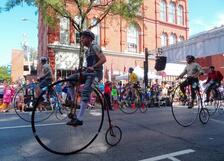 A scene from Frederick, Maryland's annual high-wheel race. A scene from Frederick, Maryland's annual high-wheel race. Biking has sure received its share of local press coverage in recent weeks. The shared-use bike path tunnel under US15 (at Rosemont Ave.) is now a completed reality. The 6th annual Tour de Frederick took riders all over the county this past weekend amidst scorching temperatures. And there was another successful running of the National Clustered Spires High Wheel Race, billed as the only race of its kind in the United States. Frederick certainly deserves its reputation as a "bike friendly destination."  One-hundred twenty years ago, the scene here was quite similar as “flyers” from all over the country descended upon Frederick. Now the term “flyers” may be a little confusing to use today as this has its chief connotation connected with airline travel—unless of course, you are a fan of professional hockey living in Philadelphia. Over a century ago, however, the most common image of flyers had nothing to do with leaving the ground. Actually it was a term reserved for those individuals powering unique, framed machines, boasting two tires cranked by pedals. In the mid-19th century, this creation was first given the name of “bicycle” by European newspapers. The Craze Different styles of tandem-wheeled transportation came to be known, and improved upon, until the late 1880’s. These included earlier prototypes with odd names such as “The Dandy Horse,” the velocipede, the boneshaker and the penny-farthing. The latter featured a tubular steel frame attached to wire-spoked wheels with solid rubber tires. Although this design was more commonly known as an “ordinary bike,” it also took the moniker of “high-wheeler” because the front tire being much taller than the rear tire. Due to the difficulty in mastering these contraptions, an alternative was introduced in the late 1880’s and given the catchy name: “safety bicycle.” Marketing genius at its finest! The “safeties” offered two wheels of identical – or nearly identical – size, and a chain-driven rear wheel. The most popular form of the safety bicycle frame became known as a diamond frame because it consisted of two triangles,. This started a bonafide frenzy the world over as the 1890’s would be known as the Golden Age of Cycling. There were upwards of 312 factories engaged in the production of the safety bicycle. Here in Frederick, one of the key supplier/agents of these “flying machines” was an unlikely retailer—the local newspaper. The Daily News, which had been started by William T. Delaplaine in 1881, was publishing frequent advertisements for “the Rambler” bicycle manufactured by the Gormully & Jeffery Mfg. Co. of Chicago. Frederick residents were bitten by the bicycle bug. Enthusiast groups quickly formed and century rides were held. The Frederick Club’s headquarters was once located at 6 West Patrick Street. One could also find other "safety" features related to the cycling experience. Schools, many owned and operated by the bicycle manufacturers themselves, offered riding lessons for beginners. Women were urged to purchase "safety skirts" for safer cycling. NOTE: Perhaps somebody missed an opportunity by not reintroducing this garment during the "Safety Dance" (Men Without Hats) rage of 1983. Last but not least, there was a model designed by the Columbia Bicycle Company and introduced at the 1896 New York Bike Show that featured a 40 lb Colt automatic gun attached to a turntable on the front handlebar. An article in the February edition of The Engineer magazine outlined this urban-assault bike saying that "the gun, which can be moved vertically or horizontally in any direction, is a single-barrel weapon with a ‘pistol’ handle attached to a breech casing, containing the mechanism for feeding, firing and ejecting the cartridges. These are contained in belts stored in a boxes containing 250 or 500 cartridges each. Single shots may be fired, or the gun may automatically fire all the cartridges on the belt at one pull of the trigger, firing 100 shots in 16 seconds." The article added that the recoil from the gun would not cause a problem with routine riding.  Starting line for a cycling event, 1896 Olympics in Athens, Greece. Starting line for a cycling event, 1896 Olympics in Athens, Greece. Olympic Revival Bicycling was “flying high” in the summer of 1896, likely fueled by the return of the first Summer Olympics (held during the modern era), in Athens the previous April. Newspapers wrote stories and showed photographs of the events. Cycling was a sanctioned offering and six featured events were contested at the Neo Phaliron Velodrome. Nineteen cyclists, all men, from five nations competed. The U.S. team didn’t participate in the cycling event. Actually the vintage Team USA didn't participate in most of the events. They only had only fourteen competitors and were involved in just three sports at the 1896 Summer Olympics. Eleven athletes took part in track and field related events, while two brothers and another engaged in pistol/rifle shooting events.  Olympic swimmer Gardner Williams (1896) Olympic swimmer Gardner Williams (1896) The third event was swimming, with one US entrant. Of the 14 Americans at the Athens Games, all but two won medals. Charles Waldstein, a shooter, and Gardner Williams, a swimmer, were the unfortunate not able to obtain the sought after "metal hardware necklace." The latter gentleman, Williams, was certainly no Michael Phelps! Penniless at the start of Olympic competition, he is rumored to have spent all of his money on training and travel. Thomas Curtis, another member of the 1896 US Olympic team, described Williams’s problems in the Athens swimming events by giving this account of the swimmer in action: “Williams jumped into the Bay of Piraeus where the swimming events were held, to start the 100m freestyle, and found the 55 degree water very cold, proclaiming, ‘Jesus Christ! I’m freezing.’ He then scrambled out of the water.” And that sadly explains a lack of medal on his part. Gardner Williams does, however, hold the unique distinction of being the first US athlete to participate in an Olympic event. (Note that for a future Jeopardy watching or cocktail reception ice-breaker!) As the Olympics aided the popularity of cycling, it did the same for competitive swimming, and municipal swimming pool construction. Some of the possible men destined for Athens, sat out that first Olympics here at home. However, some of these outstanding athletes would give Fredericktonians the opportunity to witness high-level sport competition, right here in their own backyard. This would occur over a very special Fourth of July weekend (for Frederick), in the year 1897. Two US cycling sensations would exhibit their "flying" skills for the masses. Frederick's First Big Bicycle Race On Saturday, July 3rd, well over 1,000 spectators came out to Frederick’s Athletic Field (later to be named McCurdy Field) to see the opening day of the seventh annual Meet of the Maryland Division, League of American Wheelmen. Here they saw several racing contests ranging from individual rider competitions to tandem and club/team heats. Frederick’s bicycling fans were also treated to two exhibitions by a pair of America’s leading professionals. The first was a mile-long run by John Lawson, a Swedish-American rider hailing from Wisconsin and known more commonly as "The Terrible Swede.” A half-mile exhibition was perfected by a fellow pro-bicyclist, E. P. Thompson of Philadelphia, also possessor of a nifty nickname—“the Turkey.” Another featured event during this 4th of July weekend celebration of cycling was a "coasting contest" which started atop Cemetery Hill (outside the front gate of Mount Olivet Cemetery). Without the assistance of peddling, riders could not use their brawn, but rather simply “took flight” down the hill in a northerly direction (on South Market Street) with hopes of their bicycles taking them greater distances than other competitors.  Poplar Terrace, home and estate of Col. Louis Victor Baughman located west of Frederick. Poplar Terrace, home and estate of Col. Louis Victor Baughman located west of Frederick. That Saturday afternoon, cyclists found themselves feted and treated to entertainment at Poplar Terrace, the estate of Col. Louis Victor Baughman. This property, located just west of town, today found off the family’s namesake lane (Baughman's Lane), boasted a casino as well. Additional races, tandem and of the single wheel variety took place on Col. Baughman’s horse track. He personally awarded nice silver trophies to the victors. On Saturday night, the boys greatly enjoyed a dance at Braddock Heights and according to news reports, “kept the town lively until a late hour with the noise of the cannon crackers and the sounds of their jovial hilarity.” Sunday the 4th was observed with reverence, and many of the cyclists attended local church services. Throughout the afternoon, riders took the opportunity of taking training rides throughout the county’s turnpikes, visiting places of historical interest. Monday held a schedule of additional contests. A road race took place in the early morning, possessing a route from Frederick to Woodsboro, with a return back. The Clifton team (Clifton Park, Baltimore) won this event with a record time of 1 hour and 3 minutes and 30 seconds. Late that afternoon, more events took place at Athletic Park, including a second exhibition by the original Philadelphia Flyer, E.P. “Turkey” Thompson. The grandstand was packed again to capacity with several hundred additional fans aligning the track route. Races included 1/3 mile and two mile division championships and professional handicaps. The night concluded with a grand fireworks show, stated to be “the most beautiful ever seen here.”
Although firmly grounded, Frederick and her citizens were certainly “flying high” after a great holiday weekend of cycling. I think the same can be said here this week in 2016.
3 Comments
Alice Alpert
8/20/2016 06:14:47 pm
I really enjoyed this! I had no idea cycling, or "flying", had such popularity in old Frederick. Thanks for putting this together. Gonna go look into one of those safety skirts now to wear while riding my gun bike!
Reply
8/7/2023 09:17:20 am
Cycling is not just an individual pursuit; it's a communal activity that brings like-minded souls together. Clubs and groups form, creating a sense of camaraderie and shared passion. Conversations flow effortlessly as cyclists pedal side by side, discussing routes, gear, and the art of balancing life's demands. These connections foster a sense of belonging, turning strangers into friends and transforming ordinary rides into memorable escapades.
Reply
8/12/2023 09:32:04 am
A rotary tool, often referred to as a rotary multitool or a rotary grinder, is a versatile and compact handheld device that finds its application in a wide range of tasks. Its defining feature is the ability to accommodate various attachments and accessories, making it a multifunctional tool capable of performing tasks ranging from sanding and grinding to cutting and engraving. The rotary tool's small size and lightweight design make it incredibly convenient to handle, allowing for precise control and maneuverability even in tight spaces.
Reply
Leave a Reply. |
AuthorChris Haugh Archives
February 2024
Categories |





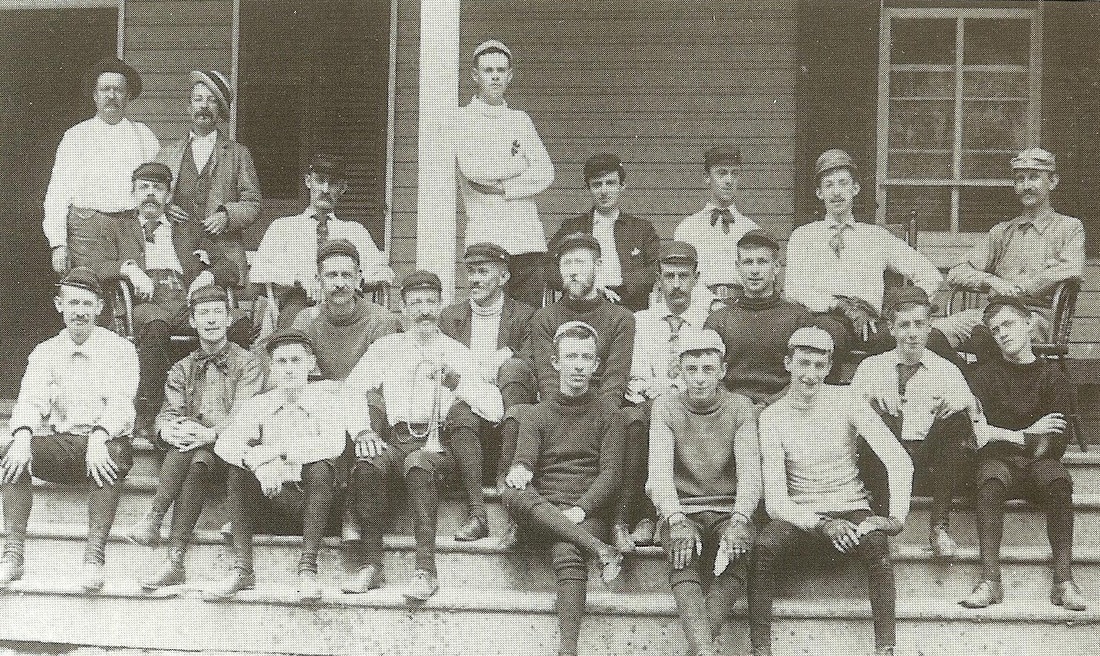



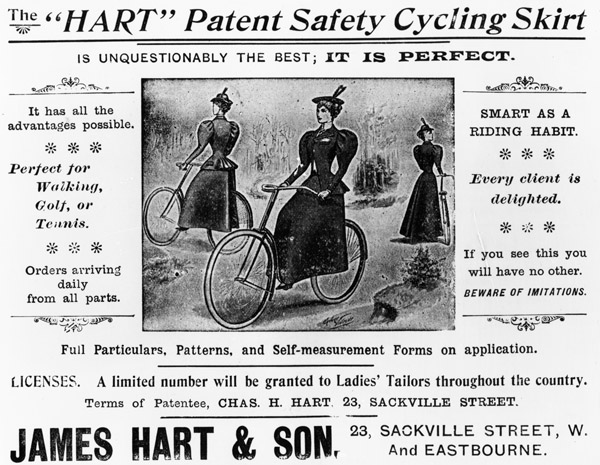
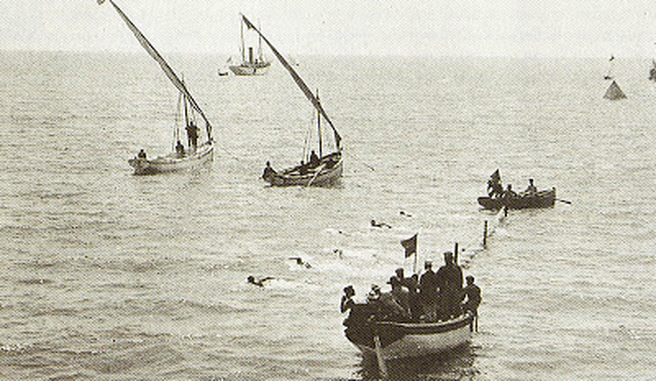



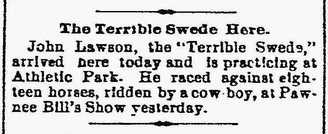





 RSS Feed
RSS Feed